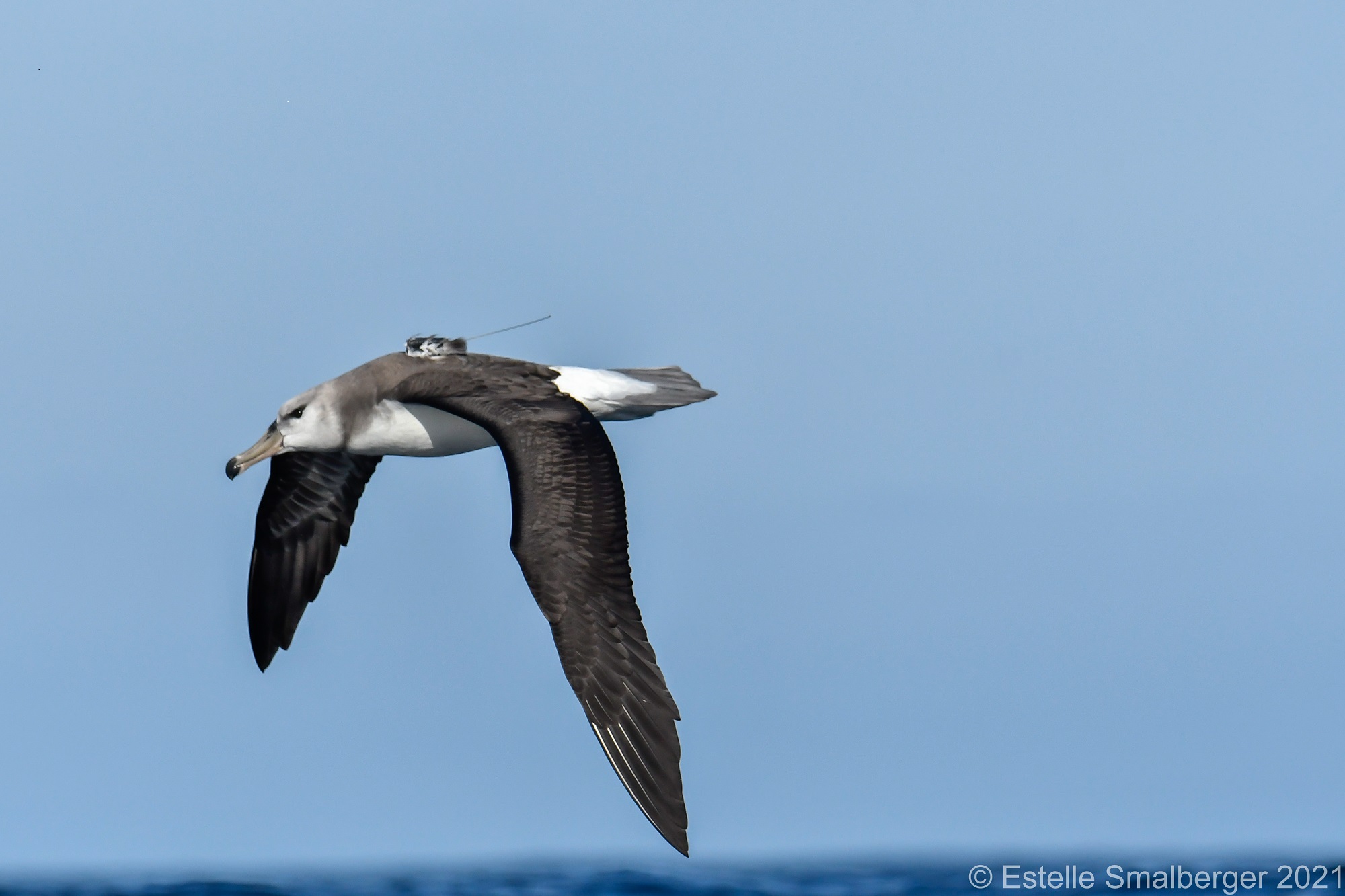 A juvenile Black-browed Albatross off Cape Town, South Africa with a tracking device visible on its back; photograph by Estelle Smalberger
A juvenile Black-browed Albatross off Cape Town, South Africa with a tracking device visible on its back; photograph by Estelle Smalberger
BirdLife International have announced new developments to their Seabird Tracking Database, an online platform where researchers can share their tracking data with scientists and wider conservation communities.
The developments include:
- the addition of a geospatial search function where polygons are created on the map to filter tracking datasets. Users can now search by any number of countries' waters (EEZs) and can upload their own polygons;
- the ability for users to create a “Public profile” in their account settings allowing for the input of input such as a job title, interests or contact details which they can choose to make public;
- the simplification of the “My account” page where datasets, user requests and requests for datasets each have their own pages.
Hosting the largest collection of seabird tracking data in the world, the BirdLife International Seabird Tracking Database stores tracking data from around the world, assisting seabird conservation work and supporting scientists. The Seabird Tracking Database can be found, here.
12 January 2024

 Español
Español  English
English  Français
Français